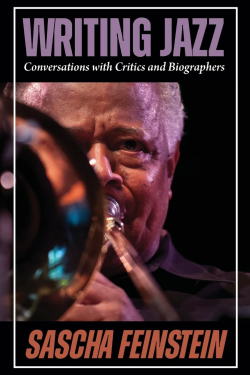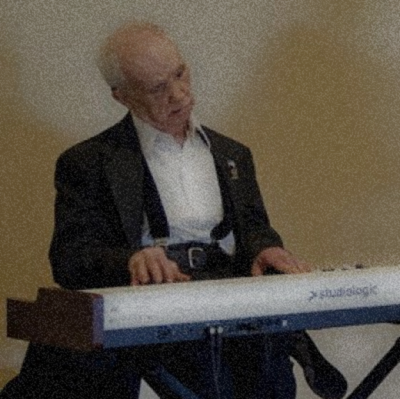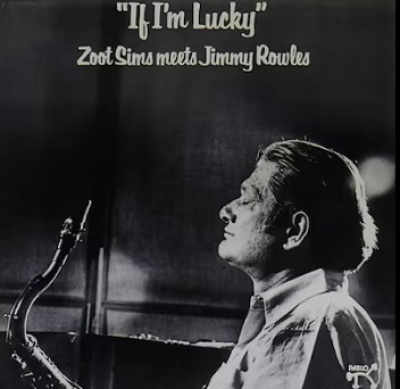Great Encounters
Book excerpts that chronicle famous encounters among twentieth-century cultural icons
*
______________
When Peggy Lee joined Benny Goodman’s band
Peggy Lee and Benny Goodman
Excerpted from
FEVER: The Life and Music of Miss Peggy Lee
by
Peter Richmond
_________________________
In CHICAGO in August 1941, preparing for an engagement at the College Inn, Benny Goodman was staying at Frank Bering’s Ambassador East. One night, Benny’s fiancee, Lady Alice Duckworth, suggested that he come next door to the Buttery and catch the new girl singer. The imperious, handsome granddaughter of Commodore Vanderbilt – founder of the New York Central Railroad – Lady Duckworth was also John Hammond’s sister.
“So the next evening she brought Benny in, because they were looking for a replacement for Helen Forrest,” Peggy would remember. “I didn’t know it, but I was it. He was looking at me strangely, I thought, but it was just his preoccupied way of looking. I thought that he didn’t like me at first, but it was just that he was preoccupied with what he was hearing.” As a rule, Benny listened to his fiancee’s musical opinions. She had the pedigree. Alice Hammond Duckworth was the “rebel” of the family, according to Hammond, and coming from John, these words had some weight. Alice’s first marriage, to a member of Parliament — of the Tory party, to boot — hadn’t worked out. Now she was engaged to Goodman.
Alice shared more than a streak of rebelliousness with her famous brother; she’d always been intrigued by John’s milieu, and the people in it. She knew her way around the jazz world, and she knew that her fiance would be intrigued by the blonde girl fronting the quartet across the street. And so on a night in mid-August 1941, she dined with Benny and Powell on steaks in the Buttery.
“I guess we’ve got to get somebody for Helen” was Mel Powell’s recollection of what Benny said over their steaks (with no mention of Benny’s table manners). And thus did the world’s most famous bandleader — “the most talked-of jazz instrumentalist in all the country,” as Esquire had recently put it — choose, as a singer for the world’s most famous band, a young girl with virtually no experience, fronting a quartet in a hotel coffee shop, based on a single night’s performance.
The group was the Four of Us. The song that Peggy would remember singing was “These Foolish Things,” Benny’s old hit with Ward, the one that had gotten her into Ken Kennedy’s studio just three short years earlier. Ward’s vibrato version had been a hit, but Peggy’s richer, more languid tones were far better suited to the poetic wistfulness of the tale of foolish reminders of a lost love:
A cigarette that bears a lipstick’s traces
An airline ticket to romantic places
“Mel thought [Benny] decided to hire me on the spot,” Peggy would later write. “It certainly didn’t look that way to me .From where I stood it looked like he was just staring at me and chewing his tongue.”
It wasn’t personal, of course; as Powell would soon reassure her,” The question with Benny is whether the plug is in or out.”
“I wish he’d enjoyed it,” Peggy said after the show, to the Four of Us.
When her roommate Jane told Peggy that Goodman had called their room the next day, she was understandably incredulous. But Jane persuaded her that it wasn’t a hoax, and that she should respond. Goodman was typically terse and all business. There was no “I’m going to make you a star” moment. “Do you want to join my band?” he rasped. Peggy’s answer was a stunned affirmative. “Come to work,” Benny said, “and wear something pretty.” No mention of a rehearsal. That night, at the College Inn, Benny’s band appeared with two canaries, the new and the old. Benny had insisted that Forrest play out her contract, but never gave her another chance to sing.
“He said, ‘Stick around until your contract runs out,'” Forrest would recall. “I sat alongside Peggy on the bandstand and didn’t sing a note for four weeks. She’d get up and sing, but I never got up. When people would ask me why I wasn’t singing, I’d say, ‘Ask Benny.’ They’d ask him and he’d say, ‘She’s got laryngitis.’ That was the longest month of my life.”
“Helen Forrest Out; Peggy Lee Joins BG,” read the Metronome story, calling it a “surprise Chicago move.” The magazine’s priorities were obvious: Peggy’s arrival was played beneath another item: news of Benny’s engagement, announced in a larger typeface: “Goodman Wedding Imminent.” Alice Duckworth had received her Reno divorce from George Duckworth. “A British paper,” read Metronome‘s account, “commenting upon the future alliance, noted that Mrs. Duckworth was known in London as a swing fan.”
At the beginning of the College Inn engagement, Peggy impressed no one. She knew the songs, but they were all in Forrest’s higher keys. For now, as far as Goodman was concerned, she was just a necessity, a little something pretty for the guys in the audience (and the players who go to sit behind her and admire a part of her physique that some of her close male admirers would never tire of praising).
At the time of Peggy Lee’s entrance, Benny had a less flamboyant troupe than in previous years. Peggy fit in perfectly. What the audience saw onstage was a girl who clearly hailed from the American outback. A local scribe referred to one of her outfits as “One of those Yukon Lil” dresses. A particularly low point came on the night when the crowd chanted “Sing! Sing! Sing!” and she thought they were screaming at her critically.
For one critic with a keen-edged pen, Peggy’s early performances with Benny evoked a woman “gripping the mike as if it were a baseball bat she was clinging to in midocean after a shipwreck.” To others with less flair, she was “a cold dish of tea.” Down Beat ran a photograph of her farmgirl face with the caption “Sweet Sixteen and she’ll never be missed” (A reference to “sweet sixteen, and never been kissed”).
“I was terrified,” she told a newspaper reporter years later. “I remember how the spotlight reminded me of a freight train bearing down on me.” She developed a “psychosomatic” cold, she said, a result of the pressure of not only performing, but replacing a woman she’d been listening to herself for so long.
Within days, Peggy approached the man she’s spent all her nickels on back in Balboa’s jukeboxes, with an offer: “I’d like to quit, please.” Until now, she had been embraced on every level, ever since Valley City. Maybe she feared she had hit her ceiling. It wasn’t as if she didn’t have other options. She was twenty-one years old. She could make a good marriage and have a family. But she would later say she knew in her heart that if Benny fired her or allowed her to quit, she would never sing again. She knew she’d turn her back on that world.
“I won’t let you” was Benny’s response.
On their national radio broadcast from the hotel’s Panther Room on August 21, the Metronome critic would praise not only Powell’s playing — “a brilliantly flexible ivoryman” — but his ability to lessen the pain of listening to the girl: “His little runs back of Peggy Lee helped reliever [her] stint of a routine quality .Singing here was only fair, and the arranging and playing couldn’t compensate for the deemphasized vocal element.”
According to Forrest, if Benny was encouraging Peggy to keep on trying, he wasn’t showing it to the band. His intractability, his obliviousness, and mostly his stare — the Ray, it was called — would all conspire to reduce the newcomer to tears: “Benny kept glaring at her. When she asked him what was wrong, he muttered something about her phrases. She didn’t know what she was doing wrong. One night Harry James stopped by to hear the band and Peggy told him tearfully of the problem. Having worked with Benny, Harry understood. He told her to tell Benny before the next performance that she now knew what the problem was and would do what he wanted. But Harry also told her to sing exactly as she had been singing, and she did this, too. When she was done, Benny smiled at her, pleased. It was one of the few times he ever showed approval of anything.”
More trying still was Peggy’s first recording date. The Columbia recording crew was in town to record more fodder for the bottomless maw of jukeboxes and ballrooms; a new Benny record was expected monthly, if not more often. John Hammond was in the studio, keeping an eye on Benny, as he liked to do. And so, on August 15, in her first week with Goodman, Peggy Lee went into the studio to record “Elmer’s Tune,” a lightweight standard that had been a hit for Glenn Miller — and was terribly difficult to sing. The key changes were frequent. The lyrics were borderline novelty, and quite silly: “Why are the stars always winkin’ and blinkin’ above? What makes a fellow start thinking of fallin’ in love?” Half a century later, Lee would confide that she still hated the recording so much she’d leave a room if someone played it.
It was now that Benny’s piano prodigy went above and beyond the call of duty. Mel Powell might have been just a kid, but he knew talent when he heard it. Powell appointed himself musical mentor of the girl who was routinely quaking in the spotlight, trying to sing in Helen Forrest’s key in front of the most sophisticated band in jazz history. Mel Powell would go on to write symphonies so complex that he’d teach theory at Yale. But his first student in music theory was a canary.
“Peggy must have been a nervous wreck,” Powell recalled. “She met Hammond in the control room, and he handed her the sheet music for ‘Elmer’s Tune.’ This was a pretty tough rap for a kid. There was no taping those days, you just made the record. If you blew something, you just started from the beginning. You didn’t say, ‘Let’s take it from measure 39’ and splice it. She was so nervous. The sheet music John handed her made such a racket it sounded like a forest fire that was going over the brass, over the saxophones. Peggy had been up all night learning this thing, and the arrangement was disorienting because ‘Elmer’s Tune’ was very clever, very fancy, full of stuff.
“So I led her into an adjacent studio, and we sat down and ran through a couple of things that were in the arrangement, especially her cues. I was constantly cuing her, and I told her that during the recording of the arrangement I could always improvise something.”
The key to it all, Powell explained, was giving Peggy her first note before she had to sing it, so she wouldn’t come in blind. “I told her, ‘Benny won’t know, nobody will know. I’m just gonna pop that [note] in there in the midst of what seems to be a ramble over the band, while the band’s playing. You catch it from that; that’ll be the cue: count four, and go.’ I think she’s never forgotten it.”
She never did. “God bless him, he was such a help to me,” Peggy recalled. “Mel would give me four bars, and I would count, and listen hard for where I was supposed to come in — jumping in at the last moment, hoping for the best.”
Adding to the general tension was Hammond, whose decadelong collaboration with Benny was beginning to fray. Benny was growing tired of John’s constantly taking credit for the band’s success. On the day of Peggy’s first recording with the big boys, the animosity came to a head. Noted audio engineer Bill Savory sat in the control booth that day. His recollection of Hammond’s behavior reflected the general dislike of the workers for Hammond.
“It was a tense situation,” Savory remembered. “John started hassling Benny about Peggy’s deficiencies. ‘Benny, she cahn’t sing. She just cahn’t sing.’ Finally, out of exasperation, Benny picked up a chair and hurled it across the studio at him.
“John was amazed, and very upset. ‘What does one do?’ he asked. ‘Does one fight?’ ‘Just forget it, John,’ I said. ‘The sight of blood would probably make you faint.'”
*
_________________________
FEVER: The Life and Music of Miss Peggy Lee
by Peter Richmond
__________
From the book FEVER: The Life and Music of Miss Peggy Lee by Peter Richmond. Copyright © 2006 by Peter Richmond. Reprinted by arrangement with Henry Holt and Company, LLC










































